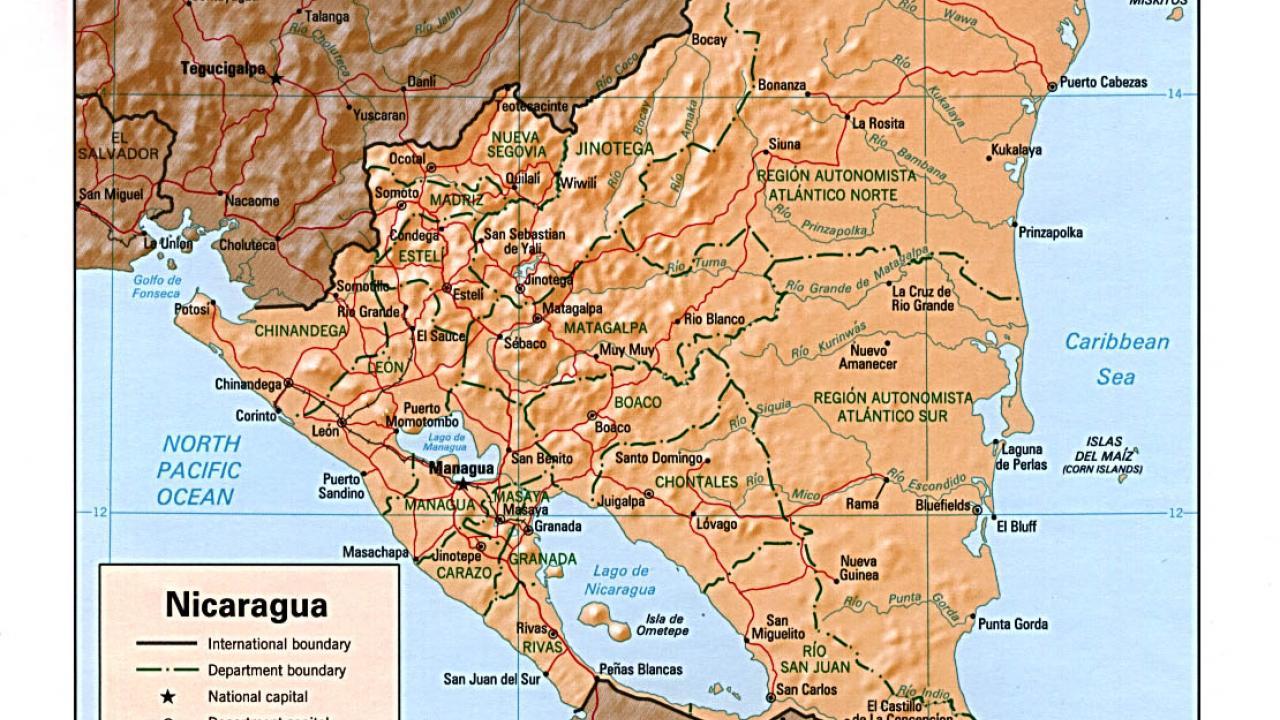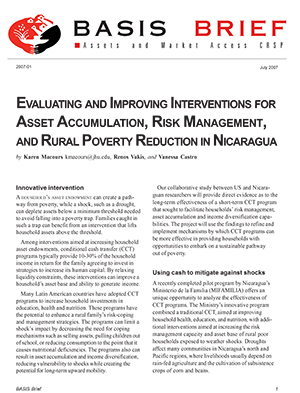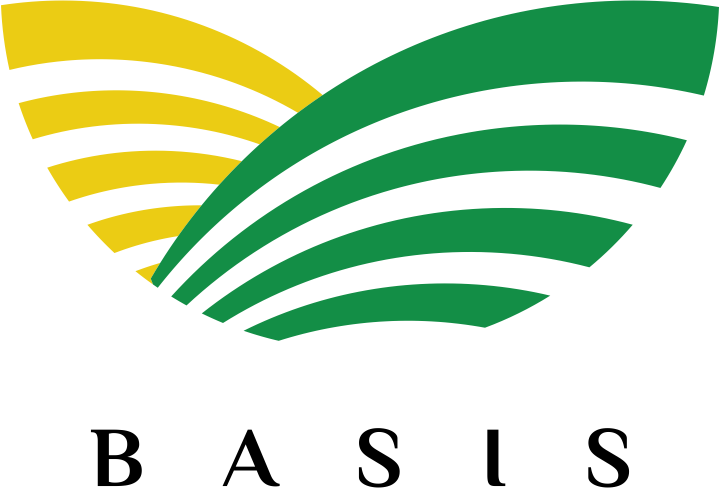
A household's asset endowment can create a pathway from poverty, while a shock, such as a drought, can deplete assets below a minimum threshold needed to avoid falling into a poverty trap. Families caught in such a trap can benefit from an intervention that lifts household assets above the threshold.
Among interventions aimed at increasing household asset endowments, conditional cash transfer (CCT) programs typically provide 10-30% of the household income in return for the family agreeing to invest in strategies to increase its human capital. By relaxing liquidity constraints, these interventions can improve a household’s asset base and ability to generate income.
 Many Latin American countries have adopted CCT programs to increase household investments in education, health and nutrition. These programs have the potential to enhance a rural family’s risk-coping and management strategies. The programs can limit a shock’s impact by decreasing the need for coping mechanisms such as selling assets, pulling children out of school, or reducing consumption to the point that it causes nutritional deficiencies. The programs also can result in asset accumulation and income diversification, reducing vulnerability to shocks while creating the potential for long-term upward mobility.
Many Latin American countries have adopted CCT programs to increase household investments in education, health and nutrition. These programs have the potential to enhance a rural family’s risk-coping and management strategies. The programs can limit a shock’s impact by decreasing the need for coping mechanisms such as selling assets, pulling children out of school, or reducing consumption to the point that it causes nutritional deficiencies. The programs also can result in asset accumulation and income diversification, reducing vulnerability to shocks while creating the potential for long-term upward mobility.
Our collaborative study between US and Nicaraguan researchers will provide direct evidence as to the long-term effectiveness of a short-term CCT program that sought to facilitate households’ risk management, asset accumulation and income diversification capabilities. The project will use the findings to refine and implement mechanisms by which CCT programs can be more effective in providing households with opportunities to embark on a sustainable pathway out of poverty.
Using Cash to Mitigate Against Shocks
A recently completed pilot program by Nicaragua’s Ministerio de la Familia (MIFAMILIA) offers an unique opportunity to analyze the effectiveness of CCT programs. The Ministry’s innovative program combined a traditional CCT, aimed at improving household health, education, and nutrition, with additional interventions aimed at increasing the risk management capacity and asset base of rural poor households exposed to weather shocks. Droughts affect many communities in Nicaragua’s north and Pacific regions, where livelihoods usually depend on rain-fed agriculture and the cultivation of subsistence crops of corn and beans.
The pilot program, which ended in December 2006, consisted of a one-year intervention for approximately 3000 households that experienced a severe drought shock the preceding year. The program was targeted at women in the household, who received the cash transfers and were the primary participants in the program’s different components.
The program had a built-in experimental structure in which one-third of the families received only the cash transfer conditional on children’s school and health service attendance, one-third received both the cash transfer and vocational training for a young household member (usually 15-25 years old), and one-third received both the cash transfer and a business grant for productive investments in livestock or non-agricultural activities. The goal for both additional activities was to provide the skills or opportunities needed for income diversification.
Searcing for Sustainable Impact
A short-term evaluation of the pilot program confirmed its immediate impact in protecting household investment in human capital and initiating new income-generating activities. There is evidence of increases in beneficiary households’ investments in livestock and non-agricultural productive assets, and improved social relationships in the communities.
Our study builds on this initial evaluation by investigating the extent to which the program successfully increased households’ human, physical and social capital in a sustainable fashion—in other words, over the longer term. In mid-2007, we will conduct a qualitative evaluation to discover if the initial impacts on household’s investments in human capital remain even without the program, and if household asset and income portfolios are more diverse.
Combining the qualitative information with the quantitative data, we also will analyze changes in households’ returns to livestock and non-agricultural activities and investigate to what extent these returns depend on household interaction and participation with regional input and output markets (including access to complementary capital), and on local-level collaboration (or competition) between community members to increase access to regional markets.
This analysis and discussion will lead to the second step of the study in which we design and then pilot new, complementary interventions. Special attention will be given to interventions that enhance the operation of, and/or access to, relevant input and output markets. The study will not only gauge the effectiveness of the MIFAMILIA program but will then use this information to design and implement complementary programs to build on its successes and correct its weaknesses. Targeting the same communities as in the original pilot program, and using an experimental design, our complementary programs might include interventions such as:
- micro-credit schemes that increase access to capital, facilitating further investments in assets and sustainable accumulation
- small-scale business development that improves opportunities in input and output markets that go beyond the borders of the communities, allowing households to increase the return to assets
- rural empirical middle school education, such as the program piloted by USAID and a rural development NGO in the study region
- improvements in parents’ knowledge of, and investment in, preventive health care for children, nutritional needs and child stimulus.
In mid-2008, one and a half years after the end of the pilot program, we will conduct a quantitative evaluation to learn about the longer-term impacts. At the same time we will evaluate the new complementary interventions. This detailed picture of household changes in physical and social assets will help show if households continue to invest in human capital after the intervention, if there is increased income diversification (in particular participation in livestock and nonagricultural activities), and if households are better protected from weather risks.
This analysis will allow us to describe to the donor community those aspects of the intervention that are the most effective in reducing long-term vulnerability to shocks. We can then compare outcomes from the program in Nicaragua to similar programs elsewhere. Project outcomes
Our long-term evaluation of the MIFAMILIA pilot will provide information on the key questions below. The evaluation will inform the design of complementary interventions meant to improve important issues related to those questions: household asset accumulation, risk management, income diversification, and gender empowerment.
Can short-term CCT programs lead to sustainable changes in a household’s human capital investments?
It is important to understand if this type of intervention can push households that suffer a shock, such as a drought, back over the minimum asset threshold needed for dynamic asset accumulation. This links the study’s findings to the growing literature on the effects of shocks on a household’s investment in human capital. Coping strategies that reduce human capital may lead to intergenerational transmission of poverty; therefore, social safety nets could help families avoid persistent poverty.
This has important implications for the design of CCT programs. For example, should they incorporate insurance elements to protect human capital assets from uninsured risk exposure? To our knowledge, there is no evidence of sustainable gains of short-term interventions that directly address these issues, which is what this research aims to contribute.
Can short-term CCT programs lead to permanent improvements in early childhood cognitive development?
The impact of CCT programs on education of schoolage children has been widely analyzed in many contexts and settings, yet little is known about the impact of the programs on the cognitive development of pre-school children. Understanding this potential impact is vital, as theory and evidence from developed countries indicate that investments in early childhood development are likely to translate into major gains for an individual’s long-term welfare. In developing country settings, where household decisions regarding human capital investments are arguably more severely constrained, gains in early childhood development might be a critical factor in breaking the intergenerational transmission of poverty.
Evidence from both developed and developing countries suggests that early-childhood cognitive development is linked to income and nutritional expenditures. Given that CCT programs are an increasingly popular mechanism to improve the nutritional and health status of pre-school children in Latin America, it is important to understand to what extent they might help prevent adverse long-term effects of shocks on cognitive development, and whether targeted short-term interventions contribute to permanent improvements in the early childhood development outcomes. This project provides an exceptional opportunity to fill these knowledge gaps.
Can short-term CCT programs, combined with interventions targeting business asset accumulation, enhance the risk-management capacity of households and lead to positive income dynamics?
Lack of a minimum endowment of assets can mean that households are trapped in poverty. Shocks can cause households to fall below that minimum asset threshold. Recent research provides empirical evidence on the existence of poverty traps and the longterm negative impact of shocks on households’ asset accumulation patterns. This suggests the long-term value of policies designed to lift households above the minimum asset threshold and to enhance household risk management when faced with shocks.
The effectiveness of different types of interventions to achieve such goals is not yet clear. Our evaluation of the MIFAMILIA pilot’s different interventions, combined with the complementary pilots that we will launch, will help fill this knowledge gap. Given the high frequency of both covariate and idiosyncratic shocks in the region, we will be able to test which types of interventions are successful in enhancing a household’s capacity to protect its asset base.
Can interventions targeted at asset accumulation by women contribute to sustainable empowerment and increased gender equity in the household?
Intra-household bargaining models, as well as related empirical evidence, indicate that a mother’s increased control over cash flows can have important effects on household investments in human capital, consumption patterns, and income strategies. Negative shocks can have differential effects along gender lines, and women (or girls) in poor households often bear the largest burden.
Available evidence suggests that, in risk-prone environments, interventions targeted at improving the risk-management capacities of women might have a proportionally higher effect on women’s welfare. This can be further enhanced by the empowerment effect of such interventions and shifts in the intra-household bargaining power. Such empowerment gains might be more likely for interventions that directly enhance the long-term income generating potential of the women in the households (e.g., vocational training or business grants), compared to cash transfers. In certain contexts, the shift in household bargaining power may lead to increased conflict between spouses. The variation between the different interventions to be studied offers a unique opportunity to investigate these questions.
Can interventions targeted at physical and human asset accumulation by the majority of women in a community also increase social capital?
The literature on the crowding-out effects of public transfers has emphasized that transfer programs might crowd out private transfers and existing mutual insurance mechanisms. Such effects might then appear as a deterioration of existing social capital. On the other hand, interventions that are targeted to a large amount of beneficiaries in a community might positively affect social capital, in particular when they encourage group formation among beneficiaries to facilitate social learning and to monitor conditionalities. Such effects have not received much attention but were found to be important in the short-term qualitative assessment of the MIFAMILIA pilot. This raises an important question about the sustainability of, and the returns to, social capital gains, and whether they differ across different types of interventions.
Capacity Building and BASIS Objectives
In parallel with the research activities, the project will contribute to local capacity building through short-term training courses, long-term degree training, and close collaboration between US and Nicaraguan researchers. The training courses will benefit development practitioners in Nicaragua and focus on operational aspects of program design and implementation, and on qualitative and quantitative tools for impact evaluation. These courses will be instrumental in the dissemination of operational and analytical lessons learned from the evaluation, and for their incorporation into policy design.
Overall, the research and capacity building program will help promote BASIS research priorities of evaluating interventions related to building assets for economic growth and poverty reduction, promoting broadly-based agricultural growth through better access to input and output markets, and understanding the relationship between asset protection and accumulation and risk management.
Related Reading
Aguilera, Verónica, Ximena Del Carpio, Carold Herrera, Karen Macours, Miriam Enoe Moncada Carlos Obregón, and Renos Vakis. 2006. “Estudio Cualitativo del Componente de Atención a Crisis (CAC) del Ministerio de la Familia, Nicaragua.” Mimeo.
Carter, Michael R., and Christopher B. Barrett, 2006. “The Economics of Poverty Traps and Persistent Poverty: An Asset-Based Approach.” Journal of Development Studies 42(2).
de Janvry, Alain, Federico Finan, Elisabeth Sadoulet and Renos Vakis, 2006. “Can Conditional Cash Transfers Serve as Safety Nets in Keeping Children at School and from Working when Exposed to Shocks?” Journal of Development Economics 79(2): 349-373.
Gertler, Paul, Sebastian Martinez, and Marta Rubio, 2005. “Investing Cash Transfers to Raise Long Term Living Standards.” World Bank Policy Research Paper 3994.
Macours, Karen and Renos Vakis. 2007. “Seasonal Migration and Early Childhood Development.” Mimeo, Johns Hopkins University and World Bank.
Maluccio, John A. and Rafael Flores. 2005. “Impact evaluation of the pilot phase of the Nicaraguan Red de Protección Social.” Research Report No. 141, International Food Policy Research Institute, Washington DC.
Publication made possible by support in part from the US Agency for International Development Cooperative Agreement No. EDH-A-00-06-0003-00 through the Assets and Market Access CRSP. All views, interpretations, recommendations, and conclusions expressed in this paper are those of the authors and not necessarily those of the supporting or cooperating organizations.
